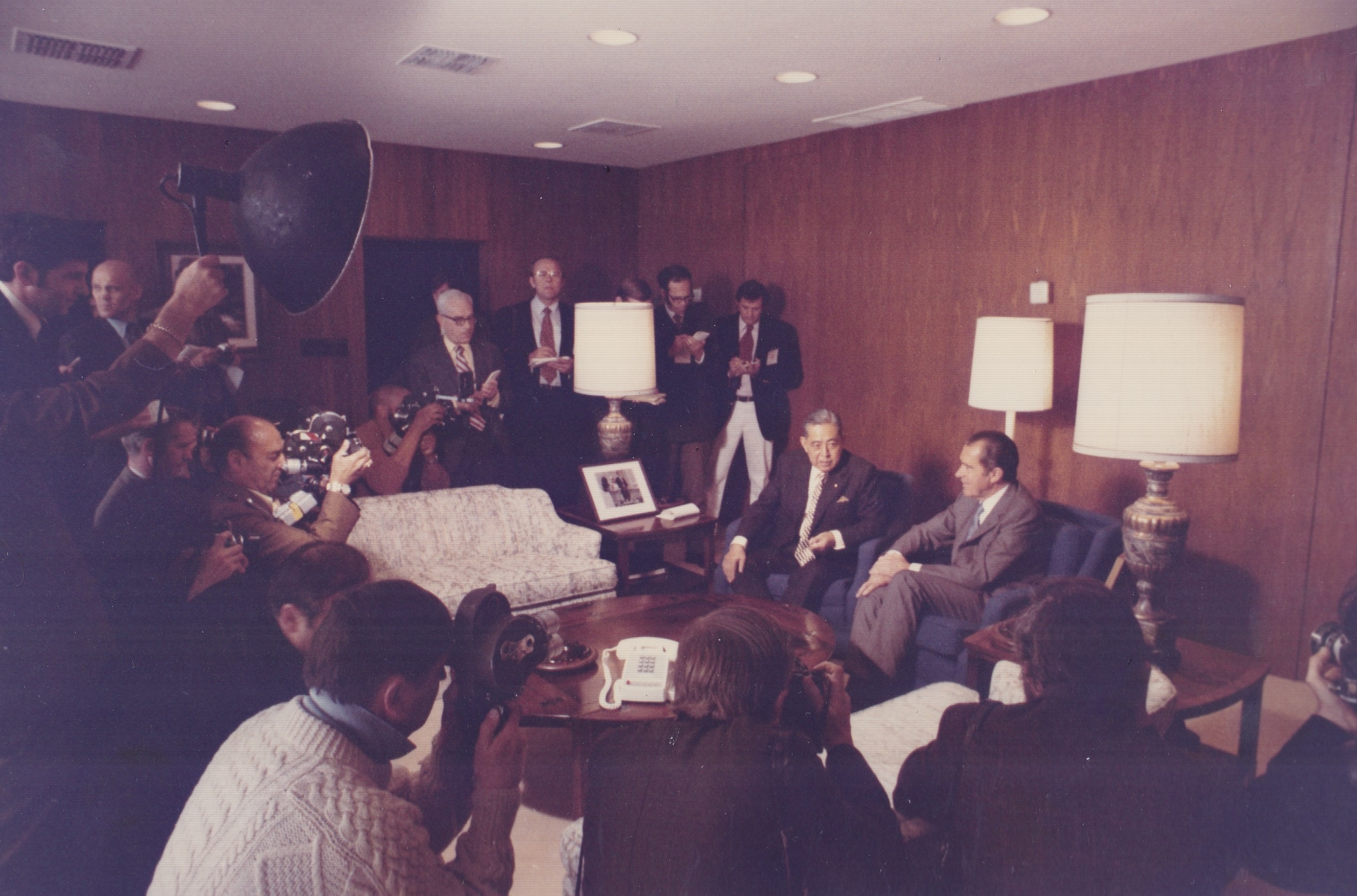On January 6-7, 1972, President Nixon met with the Prime Minister of Japan, Sato Eisaku, at San Clemente to hammer out the details of the upcoming reversion of Okinawa. It was nearly the end of a difficult and emotional but ultimately successful venture. The US occupancy of Okinawa was seen by many as the last vestiges of a post-WWII, emblematic of the victor-conquered relationship between the US and Japan. When Nixon was inaugurated on January 20, 1969, the situation with Okinawa had reached a breaking point. Yara Chobyo, who had run on a campaign of immediate reversion, had been elected Chief Executive of Okinawa, and sent Nixon a letter of congratulations with these strong words:
“[My election] was, I believe, the expression by the Prefectural People, being under another nation’s control for 24 years, of their strong desire or sentiment to unite with their brethren in Japan Proper immediately, irrespective of the United States’ position in the Far East or international situations.”
In a memo written a month later, Glenn Olds described Okinawa’s position as “a festering sore at the heart of the whole problem” that had to be taken care of before Nixon could advance other Far Eastern goals, such as developing relations with China and stabilizing post-war Vietnam.
After Nixon and Sato’s 1969 discussions, which took place in the White House from November 19-21, a joint communique announced that Okinawa would be returned to Japan sometime in 1972. The decision was made — the details were not.

Furthermore, as Sato addresses on page 5 of the record of their first discussion at San Clemente, anti-security treaty feelings persisted in Japan. These feelings led to the resistance of some of the terms of the reversion. As the below letter demonstrates, these feelings were also present in the US. As with any compromise, the reversion did not come without a price.
Foreign Minister Fukuda Takeo and Secretary of State William Rogers had worked out all of the language for the official joint statement on the reversion, but the question of the date itself was still open. Sato noted on the first page of their third discussion that the earlier, the better — the Government of Japan advocated for April 1, “even though this is April Fools’ Day.” He wanted to have Okinawa back in time to celebrate the anniversary of the cessation of combat on the island, June 23. Though they considered June 1, Nixon himself proposed the “better date” of May 15, and the leaders shook hands on the deal.
The two world leaders also discussed other matters which surfaced in the characteristically tense year of 1971. The biggest blow to the Japan-US relationship was Nixon’s July 15 announcement of his acceptance of an invitation to visit the People’s Republic of China (PRC). Many Japanese believed that Nixon had broken a promise made during the Kennedy Administration that the US would consult Japan should policy changes on China occur.
Nixon acknowledged Japan’s embarrassment, and assured Sato, as he assured all his allies, that his visit to China did not mean he was abandoning his former commitments. The Prime Minister suggested that a hot-line ought to be established between the US and Japan to mitigate further surprises, and the President agreed. They also agreed that Kissinger would visit Japan soon after the China trip. Interestingly, on page 2 of their second conversation Sato noted that he “looked forward to speaking German with Dr. Kissinger, explaining that he had taken his degree at Tokyo University in German jurisprudence.”
Perhaps the most confusing issue was that of Taiwan — the Republic of China — versus the PRC. On page 11 of their first discussion, Sato confessed he found Nixon’s position “difficult to understand” — as well he might, as both men described the different ways in which they recognized each government as that of one China. Ultimately, this issue would take years, and many painful decisions, to settle.
Yet even so, 1971 also had its positive points: on September 26, Emperor Hirohito became the first reigning Japanese Emperor to travel abroad, and he met Nixon in Anchorage, Alaska. He could not stay for a formal visit, however, as he was unsure if the political situation in Tokyo would allow Nixon to reciprocate the trip.
The San Clemente discussions reveal Nixon’s unique awareness of the fact that the US was both an Atlantic and a Pacific power. The decisions made with European leaders were, for the first time, intrinsically connected to those made with China, whose “bamboo curtain” was slowly falling, and Japan, whose economy was rapidly expanding. The three discussions, presented in full below, cover a wide range of topics (though they steer clear of the tremendous economic problems which characterized the US-Japanese relationship in the 60s and 70s), and demonstrate the unprecedented respect which Nixon felt toward Asian leaders.

